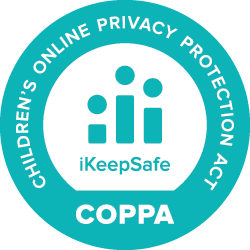Nature Recycles
Do you recycle? Did you know nature does, too? In this activity, we will compare how nature recycles with how we recycle.
Facilitation Tips and Potential Student Answers
Be sure to scroll to the bottom of the Educator Overview until you see STUDENT CONTENT BELOW THIS LINE. Interleaved in the Student Content section, you will see educator facilitation tips and potential student answers displayed in red, italic text when applicable.
Resource Title:
Nature Recycles
Description:
Do you recycle? Did you know nature does too? In this activity, we will compare how nature recycles with how we recycle.
Target Grade Level:
Grades K-4
Discipline or Course (Audience):
Science
Time Frame:
Two class periods, plus time for recording data over the course of one to two weeks.
Suggested Grouping:
3-4 students
Educator Prep:
Many items that we use today were inspired by things found in nature. Velcro, for example, was inspired by a close observation of how burrs stick to dogs. In fact, engineering inspired by nature has its own term – biomimicry. This activity asks students to examine how a tree is broken down into smaller parts and then used as the building block for something new to inspire their own designs for ways to recycle plastic. When trees decompose, they are helped along by insects and other bugs, animals such as birds, and fungi and lichen. First the tree is broken down by fungi and wood-boring insects, such as bark beetles, that are specially equipped to break down the tough wood of a newly fallen tree. Once the tree has begun to break down, other insects and bugs join in to break it down further. This makes room for animals such as voles and birds to make their homes in the trees, breaking them down further still. Eventually the tree is completely broken down into soil, which provides nutrients for a new tree to grow. Similarly, in plastic recycling, the plastic is chipped down into smaller pieces. Like a tree provides the basic materials for a new tree to grow, plastic is melted down into pellets, which can be used to make a new plastic product.
Ask students what a cycle is and to name some they have heard of (e.g., the life cycle, the rock cycle, the recycle cycle, and the water cycle).
Explain that there are many cycles in nature. A cycle is one type of system that starts and ends in the same place. A system has many different parts that work together to make it function or work. In this lesson, you are going to focus on systems we find in nature - how nature recycles a tree and a system humans have created - how humans recycle other materials. We’ll see how these two systems are similar and different.
Show students the picture of the tree and then the picture of the soil. Ask students how they think the tree became soil. Then, show them a picture of a plastic bottle and a plastic toy. Ask them how the bottle became the toy. Accept several ideas.
For this first part, you will need to find at least one piece of decomposing wood for students to observe. If you cannot find this on school property, you can bring in an example from another location. If you do this, you will need to place the log into a container so any decomposers stay wth the log. You can also leave a piece of firewood or a large branch outside for a week or two before the activity begins, and it should attract decomposers. Place the log in a shady spot, near other trees if possible, and keep it moist.
Part One: Observe Teacher Directions
Log observation is best done outside, even if you bring a log from somewhere else. If you are looking at only one log, divide students into groups and have them take turns observing it. It works best if groups cycle through so that they each have a few chances to observe and record what they see.
After students have a chance to observe the log, turn it over so they can see underneath it. This is where you will find the best evidence of decomposers and the bugs that feed on them.
Discuss with students how the log and its decomposers form their own system. For the system to work, all the parts of the system have special roles or functions. For example, a new plant depends on the decomposers to break down the old, decaying log into nutrients the plant can use. Each part of the system is connected and works together. Explain that in other places, a log might have different decomposers. Have older students write descriptions of what they see on Supporting Material - Student Data Sheet: Nature Recycles . They should include drawings to show all the different parts of what they see (the log, the dirt, the worms, etc.) and model how these parts might work together. Younger students should draw two to three things that they observe. Back in the classroom, discuss what students observed.
There are many kinds of decomposers. Supporting Material - Nature Recycles a Tree shows some, such as fungus, lichen, and bugs such as sowbugs and carpenter ants. The specific decomposers on your logs will depend on where you are and even what kind of log it is. Although you do not need to know every specific decomposer, it is helpful to recognize some basic kinds to expect in your area. Note that you may also find bugs and insects that feed on the decomposers, but are not themselves decomposers. Some examples are spiders and beetles. After the log observation, distribute Supporting Material - Nature Recycles a Tree to each student. Discuss the stages shown on the handout. Ask students how this process is a cycle, and have them explain their answer. Discuss some common types of decomposers, as shown on the handout.
Allow students to observe the log again now that they have some knowledge of different kinds of decomposers. This time, they can look for examples of each. You could say: "The picture shows four stages of a tree being decomposed. What stages do you see on the log? Look around at home or at school. Find a real example of each stage."
Part 2: Experiment Teacher Directions
Discussion
Make the connection between nature recycling a tree and students recycling items such as plastic or metal. In both cases, something is broken down and then used to make something new.
Ask students for ideas about why we need to recycle plastic. Can’t nature recycle it, like it recycles a tree?
Create an Experiment
To help answer this question, have students design an experiment to compare how a plant breaks down with how a piece of plastic breaks down. One way to do this is to put soil into two plastic bags and add fruit or vegetable matter into one bag and plastic into the other. Then observe both bags periodically until the fruit or vegetable matter is fully decomposed or for a specified period of time. To work properly, the bags must contain air when sealed. Students may come up with other ideas.
Sealing the items in a plastic bag is just one possible way for students to observe the breakdown of the vegetable matter and the plastic. They might also place them in bins, etc. To prevent mold spores (and bad smells!) from spreading in the classroom, have students keep any open containers with vegetable matter outside.
For younger students, work together as a class to design the experiment. Come up with a guiding question and a hypothesis. Identify elements of the experiment you will control and how you will collect your data. Write the steps on the board. You can have students set up the experiment in small groups and report their data to the class.
Older students can design their own experiments in small groups, although you may want to come up with the guiding question as a class. Make sure that students write a hypothesis, plan out the steps they will take, and identify how they will control conditions and how they will collect the data. Because different fruit and vegetable matter will decompose at different rates, you may want to have all students use the same type or set a time limit of two or more weeks for students to collect data.
Students should observe their experiment on a regular basis. Some ways they might collect data are to make written observations, take photos, or weigh the vegetable matter.
If students want to observe the complete breakdown of the vegetable matter, advise them to use something that breaks down quickly, such as lettuce, an apple core, or the inside or a banana. On the other hand, if they want to weigh the material, advise them to use something that will break down over a longer period of time, such as a carrot.
Two Weeks of Observations
Plan time for students to check on their experiments over at least two weeks. Avoid having students check on them every day; changes will be more noticeable if they only observe them once or twice a week. Observations and recording data should only take 5-10 minutes. Students should use Supporting Material - Student Data Sheet: Nature Recycles to record their data.
After the Experiment
When students have completed their experiments, discuss the results. Connect back to the idea of why some things have to be recycled by people instead of by nature.
Part 3: Engineer Teacher Directions
Students may need help getting started. For younger students, a class discussion for steps 4 and 5 might suffice. For older students, include the writing pieces.
Review parts 1 and 2 with students. Have them look again at Supporting Material - Nature Recycles a Tree and share what they remember from their own observations of the decomposing log. Ask them to recall how little the plastic decomposed in their experiment compared to the plant matter.
Tell students that engineers and inventors are always looking for better ways to recycle items such as plastic.
Challenge students to design a way to recycle plastic. Encourage them to use some of the processes they saw in the breakdown of a tree to help them with their ideas. For example, trees are broken down into smaller and smaller parts by some decomposers.
Lichens use chemicals to break down the tree. How could those things apply to breaking down plastic?
Have students draw their idea. Encourage them to be as specific as possible and to show how their idea would work.
Older students can also create a model of their idea. These models should have some moving parts, though they will likely not be able to complete the whole process. For example, a model might focus just on how the plastic will be moved through the process or how it will be cut down, rather than showing the whole process.
Show students Web Link - Sesame Street: Murray Visits a Recycling Center
Have students compare the plastic recycling process they saw in the video to how a tree is recycled in nature. Younger students can draw their ideas, while older students can add captions or write paragraphs to compare the two.
Reflect and Reply Teacher Notes
Students should be able to:
- Explain how the recycling of a tree is a system and identify the parts of the system that work together.
- Evaluate their experiment.
- Explain how what they observed in their experiment helps to explain why we recycle plastic.
- Explain how they got ideas for ways to recycle plastic from observing how nature recycles trees.
- Compare how plastic is recycled to how nature recycles trees.
Preparation Directions:
- Make copies of Supporting Material - Student Data Sheet: Nature Recycles and Supporting Material - Nature Recycles a Tree for each student.
- Gather materials. Note that students will be designing an experiment, so there may be additional materials required.
Literacy Connections and Extension
Read the book "One Plastic Bag" with students. Describe how the women of Gambia got rid of the piles of plastic bags. Ask students to find some items at home that can be reused to make something new. Have them bring their creation to class to share.
Remote Learning Adaptations:
This activity can be conducted online as a whole-class demonstration.
STUDENT CONTENT BELOW
Nature recycles trees. Bugs help. Other animals help. People recycle too. We recycle plastic bottles. We turn them into something new.
Materials:
- Device with internet access
- Supporting Material - Student Data Sheet: Nature Recycles
- Supporting Material - Nature Recycles a Tree
- Decomposing wood
- Soil
- Plastic bags
- Fruit or vegetable pieces
- Other items needed for your experiment
Safety Notes:
- When using technology, engage in safe, legal, and ethical behavior; this applies to devices (hardware), applications or programs (software), and interactions with others.
- There are no anticipated physical safety risks associated with this Activity.
Part 1: Observe
Look at the log.
The log is decomposing.
That means it is breaking down or rotting. This is like a cookie that crumbles into tiny pieces.
Observe
Observe the wood closely and record your observations on Supporting Material - Student Data Sheet: Nature Recycles .
Look
Look at the picture of a tree being decomposed. Supporting Material - Nature Recycles a Tree
Discuss
Talk about what you see with your classmates.
Look Again
Let's look at the log again.
- What do you observe?
- Can you find decomposers?
- Do you see examples of fungi?
- Do you see lichen, sowbugs, carpenter ants?
- Do you see burrowers?
Think About It
Do you think you can find examples of decomposers in other places? Where else might you see decomposition happening around your community?
Part 2: Experiment
You observed how nature recycles a tree. Did you know that humans recycle, too?
Pause and Think: What can we recycle as humans?
Create a List: What items can humans recycle?
We Can Recycle Plastic
One of the items we can recycle is plastic. Why do you think humans may need to recycle plastic?
Create an Experiment
Working with your class and following your teacher's directions, create an experiment to compare how plastic breaks down over time with how a plant breaks down over time.
Record the steps you plan to take on Supporting Material - Student Data Sheet: Nature Recycles
Conduct the Experiment
Check back several times over two weeks to record what you observe on your data sheet.
Are some items decomposing faster than others?
Think about these guiding questions as you discuss your results:
- Did the plant material decompose?
- Did the plastic decompose?
- How does this help you to understand why we recycle plastic?
Discuss the data (your results) with your classmates.
Part 3: Engineer
Recycling breaks something down, and then it is used to make something new. Nature recycles trees. Decomposers break down the trees, and their nutrients go into the soil, where they feed new trees. It takes a long time for plastic to break down in nature, so people recycle plastic in other ways.
Your Task
Your task is to design a way to recycle plastic. Use what you know about how trees are recycled in nature to guide your thinking.
Make Your Ideas Come to Life
Draw with as much detail as you can, how your idea will work.
Design a model of your idea.
Watch the video your teacher plays. This will show how plastic is recycled.
Think about your idea. How is your idea the same or different from what you learned by watching the video?
Share your model with others.
We recycle plastic. Nature recycles trees.
How are these the same? How are they different? Draw or write your ideas.
Reflect and Apply:
Think about Your Experiment
- Did anything surprise you?
- What challenges did you face?
- What happened in your experiment?
Nature Recycles Trees
- How did this understanding that nature recycles trees help you get ideas about how plastic might be recycled?
Compare the Human and Nature systems of Recycling
- How does nature recycle a tree?
- How do humans recycle plastic?
- What are the similarities/differences between the two systems?
Extension:
Literacy Connections
Listen as your teacher reads “One Plastic Bag.”
- The plastic bags in the story were causing a problem for the village. What were some of the problems?
- What ideas did Isatou and her friends use to solve the plastic bag problem?
- Can you think of other ways to reuse something that might be thrown away?
- How did working together help the village community?
Trash to Treasure
- Find something at home that can be reused to make something new.
- Bring your creation to class. Share how you made it by reusing materials.
Journal Question
- How can observing nature help us to solve problems?









